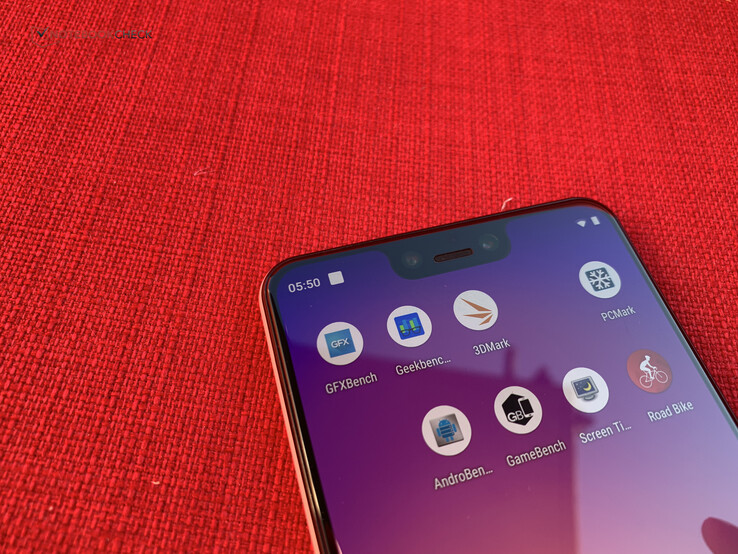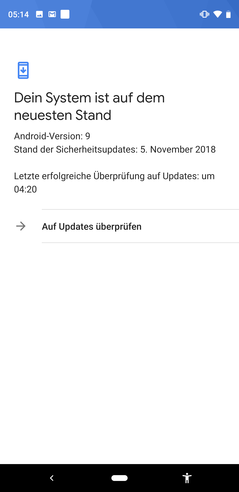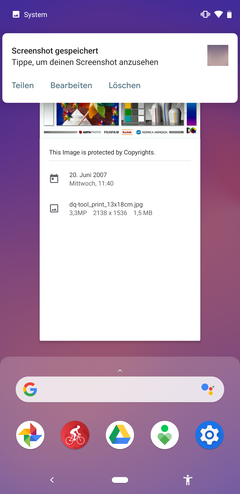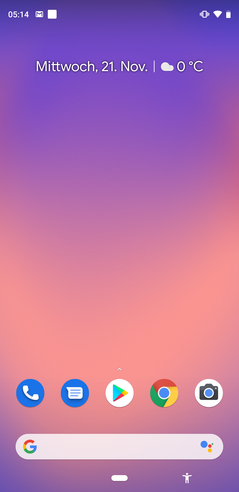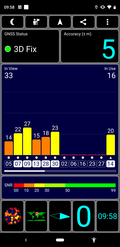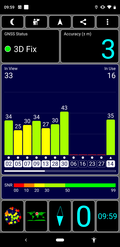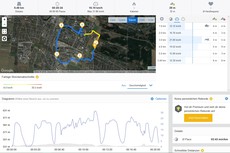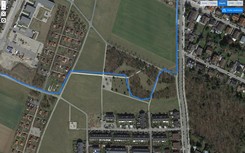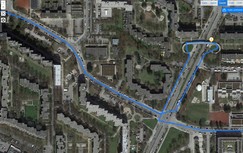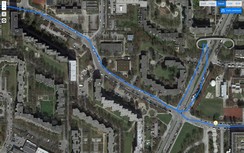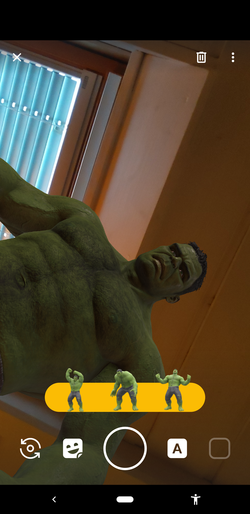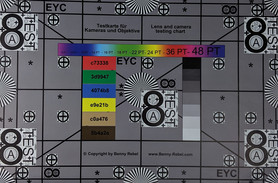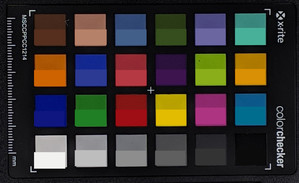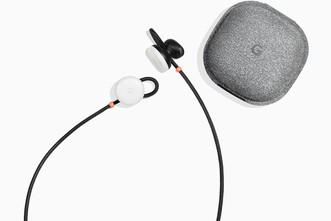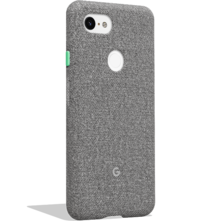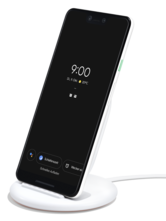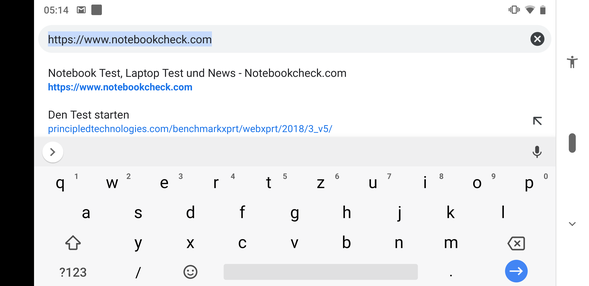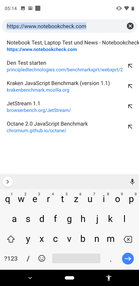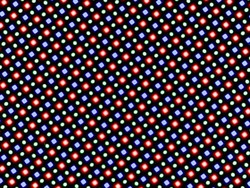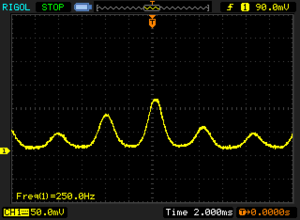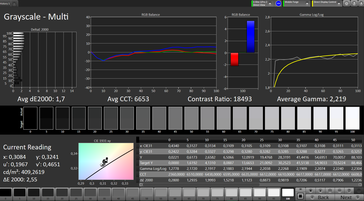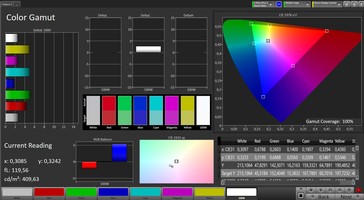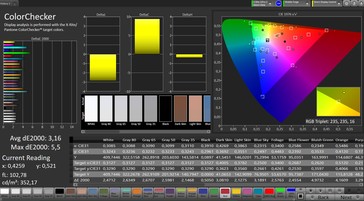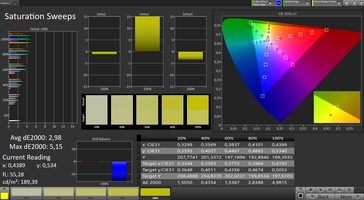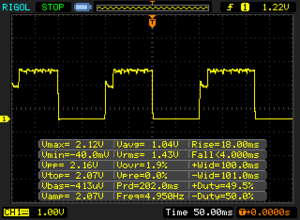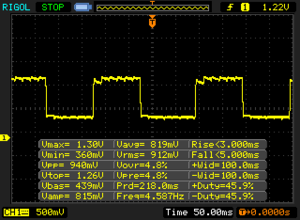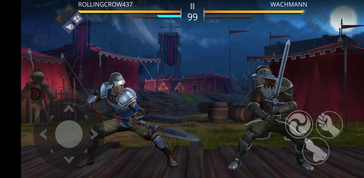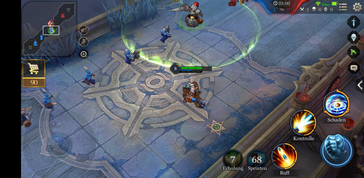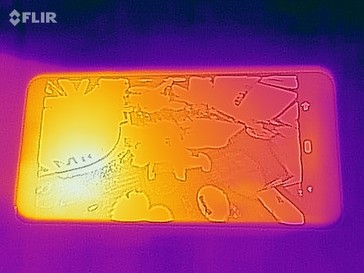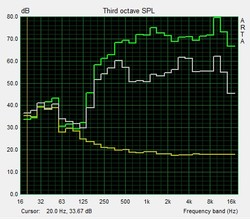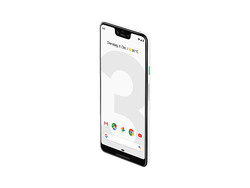Google Pixel 3 XL Smartphone Review
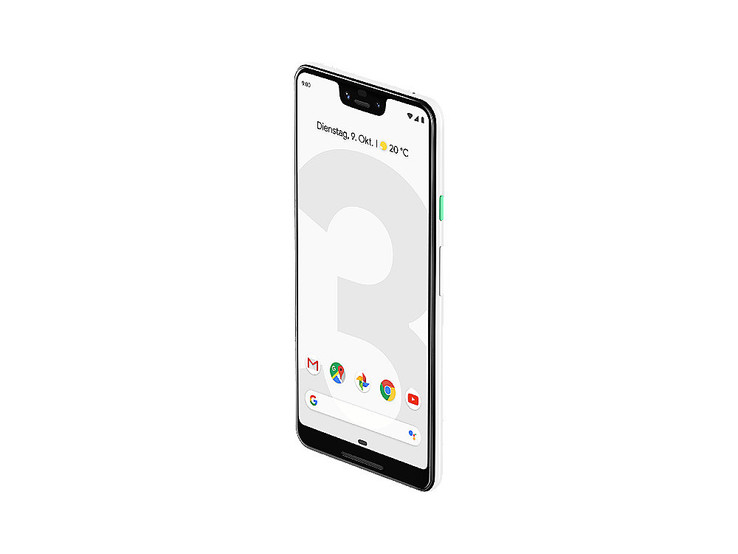
Apple and Microsoft have been largely successful at developing hardware, but Google has struggled by comparison. Its Pixel smartphones have been repeatedly criticised for being too expensive. The original Pixel XL, which Google marketed heavily with its Google Assistant software, started at $769, which was a sharp increase from the $499 for which Google initially sold the Nexus 6P. The HTC and LG-made Pixel line-up became synonymous for being expensive, upon which Google doubled down with its Pixel 2 XL, which started at $849.
Google did not partner with HTC or LG for its third generation of Pixel phones. The Pixel 3 and 3 XL are designed directly by Google and are made to order by Foxconn, which allows the former to have greater control over the design and the components used. We will focus on the Pixel 3 XL for this review, and examine whether everything is in order for Pixel fans having recently covered the Pixel 3 in a separate review.
We have chosen to compare the Pixel 3 XL against its predecessor, the Pixel 2 XL, and other current flagship smartphones. These include the Apple iPhone XS Max, the Huawei Mate 20 Pro, the Samsung Galaxy S9 Plus and the Sony Xperia XZ2 Premium.
Case
Google has completely redesigned its XL smartphone, but the Pixel 3 XL largely follows the same design aesthetic as its predecessors. The company has made some visual changes though. Firstly, the Pixel 3 XL has a notch, which follows the trend that the iPhone X first pioneered. However, Google has incorporated two front-facing cameras and a speaker grille within the notch, which makes it noticeably larger than the notch on the OnePlus 6T, for example. The second big change is the higher screen-to-body ratio, which is linked to the inclusion of a notch and may have become possible because of the smaller shielding around the Pixel 3 XL’s antennas.
The Pixel 3 XL still looks like a Google smartphone though, with the company preserving the colour-contrasting power button and the two-tone back cover. Unfortunately, the device retains the massive chin of its predecessors, which houses the second front-firing speaker. Again, OnePlus has developed a more elegant alternative by positioning the front-facing speaker on the OnePlus 6T between its frame and display. Hence, the Pixel 3 XL does not push the boundaries with its design, but it is pleasing nonetheless, particularly with its two-tone matte and glossy back glass. Google currently sells the Pixel 3 XL in black, pink or white, which the company refers to as ‘Just Black’, ‘Clearly White’ and ‘Not Pink’ respectively
Our test device is sturdy and looks expensive. Applying pressure to the front or the back of the device does not affect it at all, nor could we twist the frame. The Pixel 3 XL is IP68 certified against dust and water too.
Connectivity
The Pixel 3 XL is a tale of what Google has omitted, rather than what the company has included. There is no headphone jack, but this has been the case since the original Pixel XL. Audio is instead transmitted over USB Type-C, but Google includes a 3.5 mm jack adapter in the box should you wish to use traditional headphones. Moreover, the Pixel 3 XL has only one nano-SIM card slot and does not support expandable storage.
On the other hand, Google has equipped the Pixel 3 XL with a USB 3.1 Type-C port, an NFC chip and a barometer. The latter measures air pressure and can detect changes in altitude, which can improve navigation and pedometer accuracy. It is worth bearing in mind that the Pixel 2 XL has all these features too, but it is good that Google has included them in its successor.
The new Pixel XL continues to cost $100 more than its smaller sibling and comes in 64 GB or 128 GB variants, which cost $899 and $999 respectively.
Software
Naturally, the Pixel 3 XL comes with the latest version of Android, which at the time of writing is Android 9 Pie. Our test device arrived with the latest Android security patches too, which is in keeping with the pure Android experience that other manufacturers do not offer. Google has guaranteed that it will support the Pixel 3 XL with security and system updates until October 2021, which is as long as the company will offer online and telephone support for the device too.
Every Pixel 3 XL purchase will also come with unlimited Google Cloud storage until January 31, 2022. Photos uploaded to the cloud before that date will remain there after that date at no extra charge, but the company will charge for the storage that any new photos take up.
Last year, Google Lens was a highlight of the Pixel 2 and 2 XL. Unsurprisingly, Google has included it on its third-generation Pixel smartphones, while its AR Playground makes a return too.
The bigger trend this year is Digital Wellbeing, which is a theme that Apple has spoken much about with its iOS 12 update earlier this year. Google has followed suit and has included a feature that allows people to view a breakdown of how long they have spent on certain apps. The feature can set timers too, which prevent the app from opening after the time limits have been exceeded. The idea behind it is to limit people wasting their time on social media apps among others.
Communication & GPS
The Pixel 3 XL can achieve up to 1 Gbit/s download and 75 Mbit/s upload speeds over LTE, which is an improvement over its predecessor. The upload speed is slower than what many of its competitors can reach, but this will only be noticeable to those who frequently upload large files from the phone on a high-speed data connection.
Our test device maintained good network reception on Vodafone Germany during our tests, which we largely conducted inside buildings and in built-up areas. The Pixel 3 XL supports countless GSM/3G/LTE frequencies too and should have worldwide LTE coverage.
The Pixel 3 XL has much faster Wi-Fi performance than its predecessor too, as tested with our Linksys EA8500 reference router. Our test device achieved an average of 635 Mbit/s download and 456 Mbit/s download speeds in iperf3 Client tests that blow away the Pixel 2 XL, which reached a maximum of less than 300 Mbit/s in both tests. The Pixel 3 XL finished a respectable third in our comparison table for the download test, but it finished second bottom and 250 Mbit/s behind the Huawei Mate 20 Pro in the download tests. The Pixel 3 XL maintained good Wi-Fi reception throughout our tests though. Our test device had full Wi-Fi signal when next to the router, which decreased by a quarter when tested around 10 m (~33 ft) and three walls away from the Linksys. Websites and media content loaded just as quickly in either scenario.
The Pixel 3 XL uses BeiDou, Galileo, GLONASS and GPS including AGPS for location services. Our test device achieved a satellite fix with up to 5 m (~16 ft) accuracy when tested indoors, which increased to 3 m (~10 ft) outside.
We also took the Pixel 3 XL on a bike ride to test its navigation accuracy against a Garmin Edge 520, a professional navigation device. Our test device plotted a 370 m (~405 ft) shorter course than the 5.49 km (~3.4 mi) distance that the Garmin recorded, which is unimpressive. The Pixel 3 XL frequently cut corners as demonstrated by the screenshots below, while it got our bridge crossing comically wrong.
Overall, the Pixel 3 XL is easy to use on a bike ride as it quickly found our location within Google Maps and correctly indicated our direction of travel. However, we would recommend using a device like the Garmin if you need accurate location data, as our test device could not plot an accurate route when we cycled over rough terrain or took tight corners.
Telephone Features & Call Quality
It is unsurprising that the Pixel 3 XL uses the Google Phone app to handle telephony. The app works as expected and functions like it does on other smartphones, with a search box to query contacts or places and three tabs for favourites, call history and contacts. The keypad is accessible by pressing a button at the bottom of the display too. The Pixel 3 XL supports VoLTE and VoWiFi on carriers that support the device, the information for which can be found on carrier websites.
Call quality is mediocre for a flagship device, with our call partner often sounding rather distant. The earpiece gets loud, but calls did not sound particularly clear. We had the same experience when making calls over the speakerphone too, although we also noticed some distortions at high volumes. Overall, we would have expected a better call quality from a flagship smartphone, particularly one that costs at least $899.
Cameras
The Pixel 3 and 3 XL may be the only 2018 flagship smartphones that are released with a single rear-facing camera. This is no bad thing, but a second or third rear-facing sensor can add useful features such as optical zoom or hardware-based depth of field shots. Google relies on software to overcome the hardware gap between other high-end smartphones and has made great strides with its low-light algorithms. Additionally, AI should automatically recommend the best photo, while there is also Google Lens and the AR Playground to round off the camera software offerings.
So, we have plenty to discuss about the cameras in Pixel 3 XL. Let us start with the hardware. The rear-facing camera has not changed on paper and remains a 12.2 MP sensor with extra-large pixels and OIS. Next up is the night mode, which Google has designed to better expose low-light shots without using the flash. The results are impressive, which we have shown below. Photos shot with Night Sight enabled have less image noise, improved image clarity and are better exposed than those taken in the normal camera mode. Photos taken with Night Sight disabled are on par with those shot by other 2018 flagship smartphones, but Night Sight photos look noticeably better. Even in bright light, our test device takes sharp and colour accurate photos, which look better in our opinion than those shot with the iPhone XS Max or the OnePlus 5T, as shown in our comparison photos below.
The Pixel 3 XL can record 4K videos at up to 30 FPS like its predecessor, which is still rather poor for a flagship smartphone. Moreover, our test device can record slow-motion videos too at 1080p, but only at a disappointing 120 FPS. Overall, videos are well exposed with sharp and strong colours. The rear-facing sensor reacts quickly to changing lighting conditions too, and adjusts its exposure accordingly.
By contrast, Google has made plenty of changes to the front-facing camera. The Pixel 3 XL has two front-facing sensors, which are both 8 MP. The device can use these for dual optical zoom for different image effects as shown by our photos above. Again, photos are detailed and sharp, while the sensors can record videos in up to 1080p at a maximum of 30 FPS.
Finally, the Pixel 3 XL’s augmented reality features. We have seen Google Lens on several devices, but it works in more scenarios and generally better on the Pixel 3 XL than it did on its predecessor. AR Playground is a relatively exclusive feature for the third generation Pixel smartphones, but it may work on some older Pixel models. The functionality allows people to overlay characters into photos or videos, which interact with their surroundings. We tested this in our office with the Hulk, who roared around realistically, almost scarily so. Unfortunately, the front-facing camera does not work with all the AR Playground characters, but you can mess about with Storm Troopers in your living room or have a living burger sit on your shoulder. It is all good fun, although it is just a gimmick. We hope that Google can bring a more useful AR feature to its Pixel smartphones eventually though.
The main camera must also prove itself in our laboratory under controlled lighting conditions. The Pixel 3 XL captures our test chart in detail with good exposure, contrast and sharpness. Our only minor criticism is that a few areas of colour are uneven. Moreover, our test device generally reproduces colours too darkly compared to the reference colour.
Accessories & Warranty
Google includes plenty of accessories with the Pixel 3 XL. Our test device arrived with a USB Type-C cable and corresponding charger, a 3.5 mm adapter, a USB On-The-Go (OTG) adapter and a SIM tool. The company also sells numerous Pixel branded accessories including the Pixel Stand, which acts as a docking station and a Qi wireless charger. We have included a table below of all the accessories that Google sells for the Pixel. The Pixel 3 XL comes with 24 months manufacturer’s warranty too. Please see our Guarantees, Return policies and Warranties FAQ for country-specific information.
| Accessory | Price US | Price UK |
|---|---|---|
| Pixel Stand | $89.99 | £69 |
| Pixel 3 Case | $40 | £35 |
| My Case | $50 | £40 |
| Daydream View | $99 | £99 |
| Pixel Buds | $159 | £159 |
Input Devices & Operation
Google has kept the fingerprint sensor on the back of the Pixel 3 XL, which the company calls the ‘Pixel Imprint’. The fingerprint sensor on our test device worked reliably and quickly throughout our tests and can recognise up to five fingers. However, the Pixel 3 XL lacks facial recognition, a feature that many of its competitors include. However, devices like the OnePlus 6T include software-based solutions which are not as secure as Face ID on the recent iPhones. The Pixel 3 XL has two front-facing cameras though, so Google could have included software-based facial authentication and one which may have been more accurate than other flagship devices with single front-facing sensors.
The touchscreen works well too, being both accurate and sensitive into the corners of the display. Google has changed the design of the on-screen buttons to more of a gesture-based control. There is now only one button, which can be dragged for different actions. Swiping left triggers the back button, while swiping once upwards opens the new Recents pane, which now displays background apps and recently used apps. Swiping up a second time opens an overview of installed apps. Swiping right brings up the traditional Recents menu. Incidentally, there is no way to change to the conventional three button layout, but it should take most people a short time to get used to the updated functionality.
Although the Pixel series has nothing to do with HTC anymore, Google continues to implement the touch-sensitive side panels that HTC introduced with the Pixel 2 series. Active Edge works mainly to launch the Google Assistant, but apps can customise its functionality, like skipping to the next song in a playlist on YouTube. Expect the functionality to take a while to get used to as we found ourselves accidentally activating Google Assistant. Google leaves Active Edge on by default, which we found irritating at first. The activation pressure is adjustable though, should you find that you are triggering it too easily. Unfortunately, Active Edge is currently not customisable, which seems like an opportunity missed to create a feature that stands out from the competition.
Display
We had little to discuss about the display in the Pixel 2 XL. Its P-OLED display was below what we have come to expect from flagship smartphones. It had weak viewing angles and was far too dark. Google has switched to an AMOLED for the Pixel 3 XL, but unfortunately has inherited its predecessor’s poor maximum brightness. Our test device reaches an average maximum brightness of just over 400 cd/m² which is unacceptable for a flagship device released in 2018. Its saving grace is that is 97% evenly lit, which is higher than all our comparison devices and is a marked improvement over the P-OLED display in the Pixel 2 XL.
| |||||||||||||||||||||||||
Brightness Distribution: 97 %
Center on Battery: 410 cd/m²
Contrast: ∞:1 (Black: 0 cd/m²)
ΔE ColorChecker Calman: 3.16 | ∀{0.5-29.43 Ø4.77}
ΔE Greyscale Calman: 1.7 | ∀{0.09-98 Ø5}
100% sRGB (Calman 2D)
Gamma: 2.219
CCT: 6653 K
| Google Pixel 3 XL AMOLED, 2960x1440, 6.3" | Apple iPhone Xs Max OLED, 2688x1242, 6.5" | Samsung Galaxy S9 Plus Super AMOLED, 2960x1440, 6.2" | Huawei Mate 20 Pro OLED, 3120x1440, 6.3" | Sony Xperia XZ2 Premium LCD-IPS, 3840x2160, 5.8" | Google Pixel 2 XL P-OLED, 2880x1440, 6" | |
|---|---|---|---|---|---|---|
| Screen | 34% | 17% | 29% | 1% | -11% | |
| Brightness middle (cd/m²) | 410 | 656 60% | 565 38% | 576 40% | 477 16% | 415 1% |
| Brightness (cd/m²) | 413 | 659 60% | 571 38% | 582 41% | 453 10% | 420 2% |
| Brightness Distribution (%) | 97 | 88 -9% | 96 -1% | 90 -7% | 86 -11% | 87 -10% |
| Black Level * (cd/m²) | 0.33 | |||||
| Colorchecker dE 2000 * | 3.16 | 1.7 46% | 2.3 27% | 1.3 59% | 2.1 34% | 2.7 15% |
| Colorchecker dE 2000 max. * | 5.5 | 2.8 49% | 4.8 13% | 3.5 36% | 8.2 -49% | 4.3 22% |
| Greyscale dE 2000 * | 1.7 | 1.7 -0% | 1.9 -12% | 1.6 6% | 1.6 6% | 3.3 -94% |
| Gamma | 2.219 99% | 1.998 110% | 2.16 102% | 2.18 101% | 2.28 96% | 2.36 93% |
| CCT | 6653 98% | 6487 100% | 6332 103% | 6561 99% | 6425 101% | 6787 96% |
| Contrast (:1) | 1445 |
* ... smaller is better
Screen Flickering / PWM (Pulse-Width Modulation)
| Screen flickering / PWM detected | 250 Hz | ≤ 99 % brightness setting | |
The display backlight flickers at 250 Hz (worst case, e.g., utilizing PWM) Flickering detected at a brightness setting of 99 % and below. There should be no flickering or PWM above this brightness setting. The frequency of 250 Hz is relatively low, so sensitive users will likely notice flickering and experience eyestrain at the stated brightness setting and below. In comparison: 53 % of all tested devices do not use PWM to dim the display. If PWM was detected, an average of 8083 (minimum: 5 - maximum: 343500) Hz was measured. | |||
As usual with OLED displays, the Pixel 3 XL uses pulse-width modulation (PWM) to regulate display brightness. We measure the PWM frequency at 250 Hz across the entire brightness spectrum, which may cause eye strain and headaches for those who are PWM sensitive. Positively, OLED displays can individually switch off pixels for absolute black tones and a theoretically infinite contrast ratio.
We also tested the display’s colour accuracy with CalMAN and a spectrophotometer. Our test device achieved minor deviations from the reference colour space, while the display exhibited no blue tint to it. The display also covers the sRGB colour space fully, although CalMAN can only provide an indication of a display’s colour space coverage, so takes its readings with a pinch of salt. Subjectively, the display looks colour accurate and the content is displayed sharply.
Display Response Times
| ↔ Response Time Black to White | ||
|---|---|---|
| 22 ms ... rise ↗ and fall ↘ combined | ↗ 18 ms rise | |
| ↘ 4 ms fall | ||
| The screen shows good response rates in our tests, but may be too slow for competitive gamers. In comparison, all tested devices range from 0.1 (minimum) to 240 (maximum) ms. » 47 % of all devices are better. This means that the measured response time is similar to the average of all tested devices (20.2 ms). | ||
| ↔ Response Time 50% Grey to 80% Grey | ||
| 8 ms ... rise ↗ and fall ↘ combined | ↗ 3 ms rise | |
| ↘ 5 ms fall | ||
| The screen shows fast response rates in our tests and should be suited for gaming. In comparison, all tested devices range from 0.165 (minimum) to 636 (maximum) ms. » 19 % of all devices are better. This means that the measured response time is better than the average of all tested devices (31.6 ms). | ||
Since the ambient light sensor does not provide any boost in luminosity, the Pixel 3 XL is only usable in the shade outside on sunny days. Even then, reflections can obscure what is being shown onscreen. The device is usable on cloudy days though. The ambient light sensor promptly adjusted the display brightness to changing ambient light conditions.
Fortunately, the Pixel 3 XL has better viewing angles than its predecessors. We did notice a slight blue tint at acute viewing angles, but that should not stop most people from using the device at tight viewing angles.
Performance
The Google Pixel 3 XL is powered by a Qualcomm Snapdragon 845 SoC that integrates a Qualcomm Adreno 630 GPU. The Snapdragon 845 is powerful, but many of the smartphones that we have already tested struggle with thermal throttling. Please see our Emissions section for more information about how well the Pixel 3 XL manages its performance under sustained load.
Our test device outperforms its predecessor in the benchmarks, but it tended to finish in the middle of our comparison tables. Subjectively, the performance differences among the current generation of high-end smartphones are minimal. The Pixel 3 XL felt snappy throughout our tests and continually load apps quickly regardless of how many it had running in the background. Google has done a good job at optimising the Adreno 630 GPU too, which also performed well in graphically intensive benchmarks.
| AnTuTu v6 - Total Score (sort by value) | |
| Google Pixel 3 XL | |
| Samsung Galaxy S9 Plus | |
| Huawei Mate 20 Pro | |
| Sony Xperia XZ2 Premium | |
| Google Pixel 2 XL | |
| Average Qualcomm Snapdragon 845 (162183 - 242953, n=23) | |
The same can be said for browser benchmarks, in which the Pixel 3 XL typically finishes in the upper section of our comparison tables. Subjectively, HTML 5 websites like Google Interland load quickly on our test device and ran smoothly throughout testing.
| JetStream 1.1 - Total Score | |
| Apple iPhone Xs Max (Safari 12) | |
| Huawei Mate 20 Pro (Chrome 69) | |
| Average Qualcomm Snapdragon 845 (22.5 - 90.9, n=25) | |
| Google Pixel 3 XL (Chrome 70) | |
| Sony Xperia XZ2 Premium (Chrome 68) | |
| Samsung Galaxy S9 Plus (Samsung Browser 7.0) | |
| Google Pixel 2 XL (Chrome 62) | |
| Octane V2 - Total Score | |
| Average of class Smartphone (2228 - 126661, n=195, last 2 years) | |
| Apple iPhone Xs Max (Safari 12) | |
| Huawei Mate 20 Pro (Chrome 69) | |
| Google Pixel 3 XL (Chrome 70) | |
| Average Qualcomm Snapdragon 845 (3991 - 18275, n=28) | |
| Samsung Galaxy S9 Plus (Samsung Browser 7.0) | |
| Sony Xperia XZ2 Premium (Chrome 68) | |
| Google Pixel 2 XL (Chrome 62) | |
| Mozilla Kraken 1.1 - Total | |
| Google Pixel 2 XL (Chrome 62) | |
| Sony Xperia XZ2 Premium (Chrome 68) | |
| Average Qualcomm Snapdragon 845 (2154 - 11204, n=28) | |
| Google Pixel 3 XL (Chrome 70) | |
| Samsung Galaxy S9 Plus (Samsung Browser 7.0) | |
| Huawei Mate 20 Pro (Chrome 69) | |
| Average of class Smartphone (257 - 28190, n=155, last 2 years) | |
| Apple iPhone Xs Max (Safari 12) | |
| WebXPRT 3 - Overall | |
| Average of class Smartphone (38 - 380, n=30, last 2 years) | |
| Apple iPhone Xs Max (Safari 12) | |
| Huawei Mate 20 Pro (Chrome 69) | |
| Google Pixel 3 XL (Chrome 70) | |
| Average Qualcomm Snapdragon 845 (19 - 103, n=17) | |
| Sony Xperia XZ2 Premium (Chrome 68) | |
| Samsung Galaxy S9 Plus | |
| WebXPRT 2015 - Overall | |
| Apple iPhone Xs Max (Safari 12) | |
| Huawei Mate 20 Pro (Chrome 69) | |
| Google Pixel 3 XL (Chrome 70) | |
| Average Qualcomm Snapdragon 845 (96 - 291, n=23) | |
| Sony Xperia XZ2 Premium (Chrome 68) | |
| Google Pixel 2 XL (Chrome 62) | |
| Samsung Galaxy S9 Plus (Samsung Browser 7.0) | |
* ... smaller is better
The Pixel 3 XL does not support expandable storage, so we can only compare our test device’s internal storage speeds against our comparison devices. The UFS 2.1 flash storage is generally fast, but its read speeds are slower than many of our comparison devices. However, we did not notice any long load times during our tests or in daily use. In short, apps and data should load quickly on the Pixel 3 XL.
| Google Pixel 3 XL | Samsung Galaxy S9 Plus | Huawei Mate 20 Pro | Sony Xperia XZ2 Premium | Google Pixel 2 XL | Average 64 GB UFS 2.1 Flash | Average of class Smartphone | |
|---|---|---|---|---|---|---|---|
| AndroBench 3-5 | -14% | 18% | -20% | -10% | -4% | 322% | |
| Sequential Read 256KB (MB/s) | 633 | 819 29% | 853 35% | 749 18% | 760 20% | 696 ? 10% | 2248 ? 255% |
| Sequential Write 256KB (MB/s) | 228.6 | 204.9 -10% | 196.4 -14% | 171 -25% | 195.3 -15% | 224 ? -2% | 1887 ? 725% |
| Random Read 4KB (MB/s) | 120.8 | 129.7 7% | 157.4 30% | 136 13% | 170.6 41% | 137.2 ? 14% | 299 ? 148% |
| Random Write 4KB (MB/s) | 132.7 | 22.74 -83% | 157.8 19% | 21.75 -84% | 17.84 -87% | 84.7 ? -36% | 346 ? 161% |
| Sequential Read 256KB SDCard (MB/s) | 79.2 ? | 83.2 ? | 34.18 ? | 68.6 ? | |||
| Sequential Write 256KB SDCard (MB/s) | 67.2 ? | 72.4 ? | 30.23 ? | 52.2 ? |
Games
Our test device handled modern and complex games with ease throughout testing. According to GameBench, the Pixel 3 XL rendered both "Arena of Valor" and "Shadow Fight 3" at 60 FPS in either low or high graphics settings. Framerates remained largely consistent too, as the graphs below show.
The positional sensor and touchscreen worked reliably when gaming. We had no issues with either throughout testing.
| Arena of Valor | |||
| Settings | Value | ||
| min | 60 fps | ||
| high HD | 60 fps | ||
| Shadow Fight 3 | |||
| Settings | Value | ||
| high | 60 fps | ||
| minimal | 60 fps | ||
Emissions
Temperature
Surface temperatures on our test device rise to a maximum of 42 °C (~108 °F), which will feel warm to the touch, but is far from being critical. Pleasingly, we had no issue with thermal throttling in a looped GFXBench Battery Test. By contrast, numerous modern flagship devices cannot maintain their peak performance under sustained load, so Google has done well here.
We have come across reports online of some Pixel 3 and Pixel 3 XL smartphones overheating when subjected to prolonged load, but we could not replicate such behaviour with either of our test devices. Google has already offered hardware exchanges to many of those who have been affected, so we suspect that this may have been a bad batch of devices rather than anything more endemic of Pixel 3 and Pixel 3 XL devices.
(±) The maximum temperature on the upper side is 42 °C / 108 F, compared to the average of 35.2 °C / 95 F, ranging from 21.9 to 247 °C for the class Smartphone.
(+) The bottom heats up to a maximum of 39.9 °C / 104 F, compared to the average of 34 °C / 93 F
(+) In idle usage, the average temperature for the upper side is 25.7 °C / 78 F, compared to the device average of 32.9 °C / 91 F.
Speakers
The Pixel 3 XL has front-firing stereo speakers, which sound and have broadly the same characteristics as those in the Pixel 2 XL. The maximum volume of those in our test device is lower than the speakers in the Pixel 2 XL, but mid and high tones are reproduced in greater clarity. Our test device does a better job at reproducing low-midrange tones too, but they get more lost in the mix than they do with its predecessor because they are producing more quietly. However, these are only complaints at the highest level as the Pixel 3 XL has fantastic sounding speakers that do not distort at any volume.
Audio output is only possible over Bluetooth and USB Type-C. Google includes a headphone jack adapter in the box and USB Type-C headphones in the box, the latter of which sound good enough for bundled headphones. The Pixel 3 XL supports aptX HD over Bluetooth for detailed wireless audio reproduction. Our test device paired easily with Bluetooth headphones and speakers too.
Google Pixel 3 XL audio analysis
(+) | speakers can play relatively loud (84.2 dB)
Bass 100 - 315 Hz
(-) | nearly no bass - on average 73.5% lower than median
(+) | bass is linear (0% delta to prev. frequency)
Mids 400 - 2000 Hz
(-) | nearly no mids - on average 73.5% lower than median
(+) | mids are linear (0% delta to prev. frequency)
Highs 2 - 16 kHz
(-) | nearly no highs - on average 73.5% lower than median
(+) | highs are linear (0% delta to prev. frequency)
Overall 100 - 16.000 Hz
(-) | overall sound is not linear (124.6% difference to median)
Compared to same class
» 94% of all tested devices in this class were better, 5% similar, 1% worse
» The best had a delta of 11%, average was 35%, worst was 134%
Compared to all devices tested
» 98% of all tested devices were better, 2% similar, 0% worse
» The best had a delta of 4%, average was 24%, worst was 134%
Google Pixel 2 XL audio analysis
(+) | speakers can play relatively loud (88.4 dB)
Bass 100 - 315 Hz
(-) | nearly no bass - on average 28.1% lower than median
(±) | linearity of bass is average (9.5% delta to prev. frequency)
Mids 400 - 2000 Hz
(+) | balanced mids - only 3.2% away from median
(+) | mids are linear (5.5% delta to prev. frequency)
Highs 2 - 16 kHz
(+) | balanced highs - only 3.1% away from median
(+) | highs are linear (4.2% delta to prev. frequency)
Overall 100 - 16.000 Hz
(±) | linearity of overall sound is average (19.6% difference to median)
Compared to same class
» 29% of all tested devices in this class were better, 8% similar, 63% worse
» The best had a delta of 11%, average was 35%, worst was 134%
Compared to all devices tested
» 49% of all tested devices were better, 7% similar, 44% worse
» The best had a delta of 4%, average was 24%, worst was 134%
Battery Life
Power Consumption
The Pixel 3 XL consumes less power at idle than its predecessor, but it consumes up to 9.5 W under load, which is above average for a Snapdragon 845 powered device and is more than all our comparison devices. Overall though, the Pixel 3 XL finishes third in our comparison table, being 1% behind the iPhone XS Max and 26% behind the Samsung Galaxy S9 Plus.
| Off / Standby | |
| Idle | |
| Load |
|
Key:
min: | |
| Google Pixel 3 XL 3430 mAh | Apple iPhone Xs Max 3174 mAh | Samsung Galaxy S9 Plus 3500 mAh | Huawei Mate 20 Pro 4200 mAh | Sony Xperia XZ2 Premium 3540 mAh | Google Pixel 2 XL 3520 mAh | Average Qualcomm Snapdragon 845 | Average of class Smartphone | |
|---|---|---|---|---|---|---|---|---|
| Power Consumption | 1% | 26% | -12% | -13% | -15% | -10% | -14% | |
| Idle Minimum * (Watt) | 0.7 | 1 -43% | 0.68 3% | 0.95 -36% | 0.67 4% | 1.28 -83% | 0.862 ? -23% | 0.847 ? -21% |
| Idle Average * (Watt) | 1.4 | 1.4 -0% | 0.95 32% | 2.17 -55% | 2.5 -79% | 1.87 -34% | 1.728 ? -23% | 1.446 ? -3% |
| Idle Maximum * (Watt) | 2 | 1.7 15% | 1.09 45% | 2.25 -13% | 2.51 -26% | 1.89 5% | 2.07 ? -4% | 1.63 ? 18% |
| Load Average * (Watt) | 4.8 | 4.6 4% | 4.58 5% | 4.47 7% | 4.3 10% | 3.73 22% | 4.87 ? -1% | 6.95 ? -45% |
| Load Maximum * (Watt) | 9.5 | 6.7 29% | 5.16 46% | 6.15 35% | 6.87 28% | 8.08 15% | 9.27 ? 2% | 11.3 ? -19% |
* ... smaller is better
Battery Life
The Pixel 3 XL has a 3,430 mAh battery, which is slightly smaller than the battery inside its predecessor. Correspondingly, the Pixel 2 XL achieves longer runtimes in our battery life tests. However, our test device finished second in our overall comparison table, beating the iPhone XS Max, the Galaxy S9 Plus and the Xperia XZ2 Premium. Moreover, the Pixel 3 XL lasted an impressive 11:31 hours in our Wi-Fi battery life test, a runtime that is bettered only by the iPhone XS Max and the Mate 20 Pro of our comparison devices.
Based on our experience with our test device, the Pixel 3 XL should last most people a day’s use between charges even if that day involves some intensive use. Your experience may vary if you live in a hotter climate though.
The included charger recharges our test device fully in under two hours. However, the charging rate slows down if the Pixel 3 XL is being pushed hard as it is being charged.
| Google Pixel 3 XL 3430 mAh | Apple iPhone Xs Max 3174 mAh | Samsung Galaxy S9 Plus 3500 mAh | Huawei Mate 20 Pro 4200 mAh | Sony Xperia XZ2 Premium 3540 mAh | Google Pixel 2 XL 3520 mAh | |
|---|---|---|---|---|---|---|
| Battery runtime | -8% | -18% | 6% | -23% | -6% | |
| Reader / Idle (h) | 28.8 | 21.8 -24% | 22.4 -22% | 29.1 1% | 22.5 -22% | 28.4 -1% |
| H.264 (h) | 12.1 | 13.4 11% | 11.2 -7% | 14.2 17% | 8.7 -28% | 11.2 -7% |
| WiFi v1.3 (h) | 11.5 | 12.4 8% | 8.7 -24% | 12.8 11% | 9.1 -21% | 9.7 -16% |
| Load (h) | 5 | 3.7 -26% | 4 -20% | 4.7 -6% | 3.9 -22% | 5 0% |
Pros
Cons
Verdict
If you do not like notches, you can stop reading now. The Google Pixel 3 XL has a huge notch, which is already a step behind some of its competitors that have less obtrusive notches, in-screen fingerprint sensors and even a slide-out front-facing camera to maximise their screen-to-body ratios.
The Google Pixel 3 XL’s rear-facing camera takes outstanding photos, but its video capabilities are outdated. Moreover, the dual front-facing cameras are useful, but only if you take selfies regularly. The AR and Digital Wellbeing features are novel too, but these were already available with third-party apps, so they are not exactly groundbreaking.
The Google Pixel 3 XL is too expensive at full price to convince us of its many great features. It just does not do anything to set itself out from the crowd.
What remains with the Google Pixel 3 XL, is a stylish, and well-built smartphone that does many things well and few things badly. Unfortunately, it does not do anything to make it stand out from an already saturated market. Google is optimistic about charging up to $999 for the 128 GB version. We would recommend checking out the Pixel 3 XL if you can buy it for below retail price though, as it is a great smartphone with first-class cameras and speakers.
Google Pixel 3 XL
- 08/31/2022 v7 (old)
Florian Schmitt


